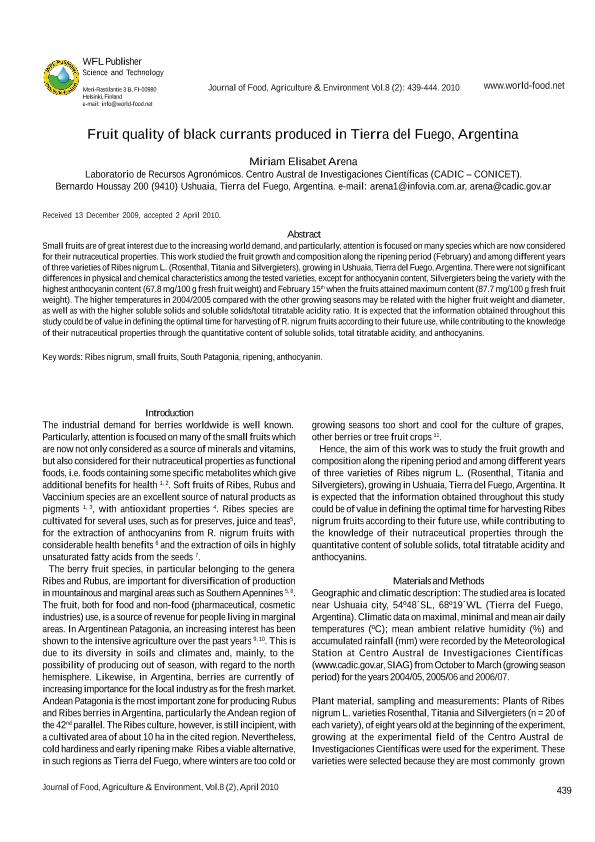Artículo
Fruit quality of black currants produced in Tierra del Fuego, Argentina
Fecha de publicación:
04/2010
Editorial:
Wfl Publisher
Revista:
Journal of Food Agriculture
ISSN:
1459-0255
e-ISSN:
1459-0263
Idioma:
Inglés
Tipo de recurso:
Artículo publicado
Clasificación temática:
Resumen
Small fruits are of great interest due to the increasing world demand, and particularly, attention is focused on many species which are now considered for their nutraceutical properties. This work studied the fruit growth and composition along the ripening period (February) and among different years of three varieties of Ribes nigrum L. (Rosenthal, Titania and Silvergieters), growing in Ushuaia, Tierra del Fuego, Argentina. There were not significant differences in physical and chemical characteristics among the tested varieties, except for anthocyanin content, Silvergieters being the variety with the highest anthocyanin content (67.8 mg/100 g fresh fruit weight) and February 15th when the fruits attained maximum content (87.7 mg/100 g fresh fruit weight). The higher temperatures in 2004/2005 compared with the other growing seasons may be related with the higher fruit weight and diameter, as well as with the higher soluble solids and soluble solids/total titratable acidity ratio. It is expected that the information obtained throughout this study could be of value in defining the optimal time for harvesting of R. nigrum fruits according to their future use, while contributing to the knowledge of their nutraceutical properties through the quantitative content of soluble solids, total titratable acidity, and anthocyanins.
Palabras clave:
Ribes Nigrum
,
Small Fruits
,
South Patagonia
,
Ripening Anthocyanin
Archivos asociados
Licencia
Identificadores
Colecciones
Articulos(CADIC)
Articulos de CENTRO AUSTRAL DE INVESTIGACIONES CIENTIFICAS
Articulos de CENTRO AUSTRAL DE INVESTIGACIONES CIENTIFICAS
Citación
Arena, Miriam Elisabet; Fruit quality of black currants produced in Tierra del Fuego, Argentina; Wfl Publisher; Journal of Food Agriculture; 8; 2; 4-2010; 439-444
Compartir




